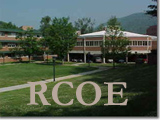Artifact # 10
Competency 10.3:
"Access resources for planning instruction available via
telecommunications (e.g., experts, lesson
plans, authentic data, curriculum materials)."
Competency 12.5: "Organizational and management strategies that support active student involvement, inquiry, and collaboration ."
Context
I created this artifact during block my senior year at Appalachian State University. This artifact was created on the web using a pre devised template that was created for us by our professor. It was broken up into two sections, third and fourth grade reading levels. I worked in collaboration with one other person and we created a unit on Patricia Polacco. The idea of the project was to come up with one unit and two different reading levels so that all students could be engaged by accomodationg different instructional reading levels and reading quality literature. It gets kids engaged in the same topic by reading different literature selections. My section focused on a third grade reading level, which is one grade level below the actually reading level.
Impact
This literature circle unit is both beneficial for teachers and students. The students read the books and complete the different written jobs that are assigned at that time and then form as a group to discuss what they have learned so far. The Patricia Polacco Unit can be used with Reading and Language Arts. Pink and Say can be used in accordance with the Social Studies Curriculum in the upper grades. This type of reading and discussion can help student's improve their reading and comprehension skills. The Unit is set up in sections and each section provides specific examples for each job assigned. This web page can also be used as a model for teachers everywhere to create the same kind of unit, using what is appropriate for them
Alignment
This artifact aligns with Technology Competency 10.3 in which the example can be found on the internet for other teachers to use within their own classroom.
This artifact also aligns with Technology Competency 12.5. This allows students to organize the materials that they find within each section. They must learn to manage their reading time in order to complete each section to share with their group. Students are also encouraged to get involved and collaborate with their group.
The Literature Circle Unit aligns with INTASC principle 1. It allows students to delve into each section to find various answers based on their jobs. The students are independently making predictions, researching information, and drawing conclusions based on the information that they find. It is more beneficial to the students to find and create their own questions and answers, rather than always relying on the teacher's. That way they can begin to form their own opinions and provide justification for their answers. The literature circles allow them to provide proof for their answers by looking through each section to find answers to their own questions. They learn by looking and proving the information to themselves, which makes it become a more meaningful experience for everyone involved.
The Literature Circle Unit also aligns with INTASC principle 4 in which the literature circle unit helps to teach the students using different instructional strategies to get the ideas across. It is an effective way of helping students develop critical thinking skills, problem solving skills, and performance skills. The students act as the teacher by preparing their jobs to share with their groups. It uses those multiple teaching strategies to encourage thought process and some depth while reading. They assume different roles with each section and are able to bring variety to the table when coming together for discussion.
The Literature Circle Unit aligns with INTASC
principle 6. The teacher uses effective verbal, nonverbal, and
media communication to teach the students about literature circles and
how to complete them. It is an excellent way to get everyone involved
in reading and discussion, and it provides an outlet for reading other
than just to read it. The collaboration among groups and the supportive
interaction from the teacher and other classmates, truly makes this project
a success.
